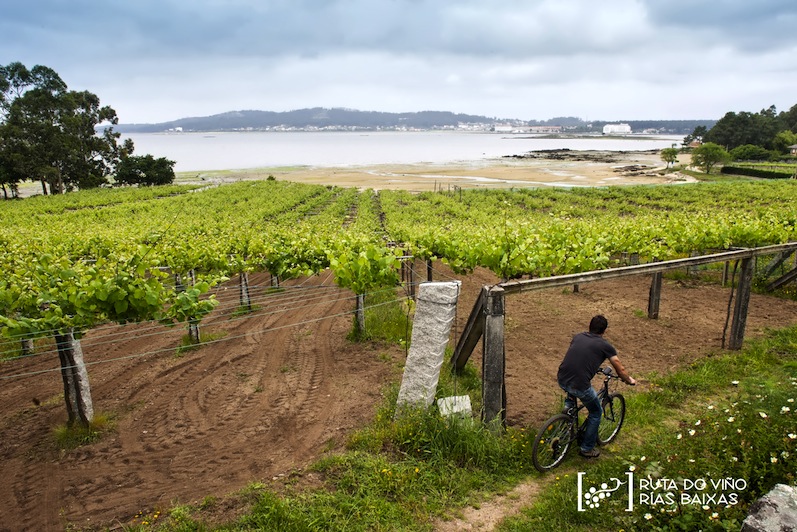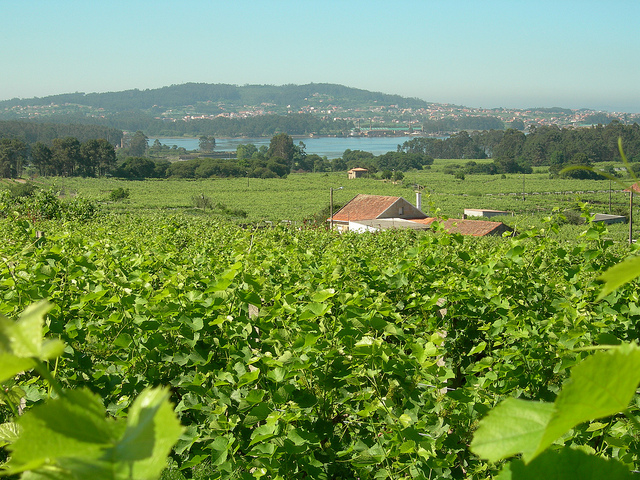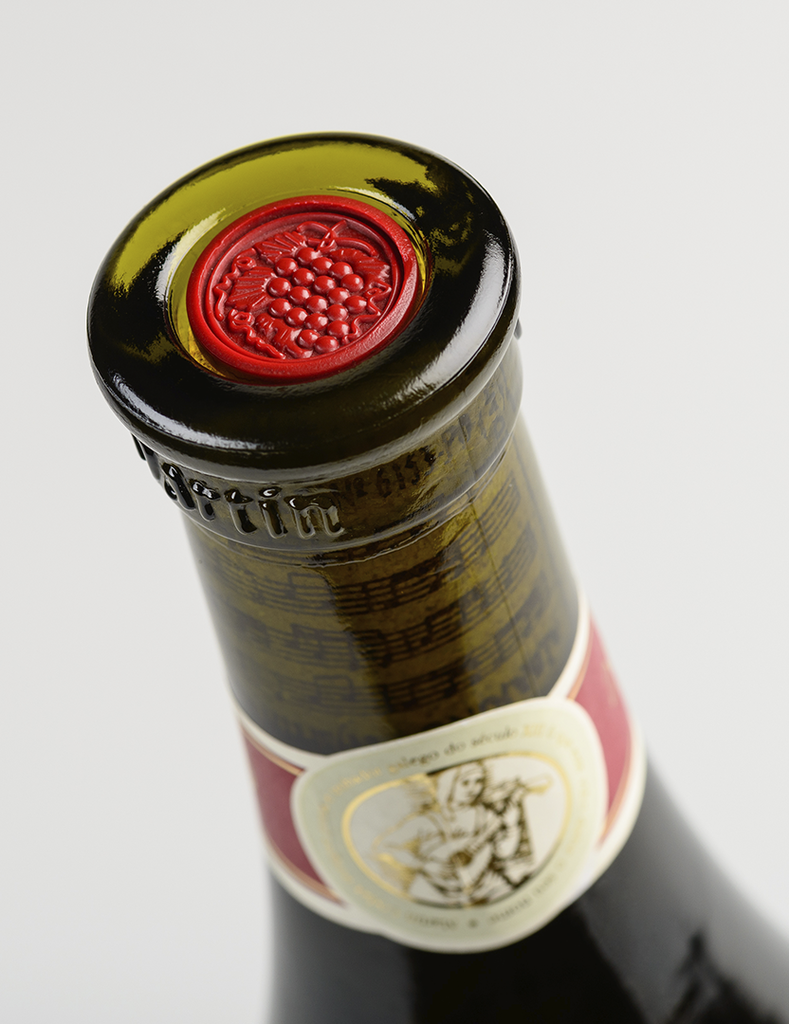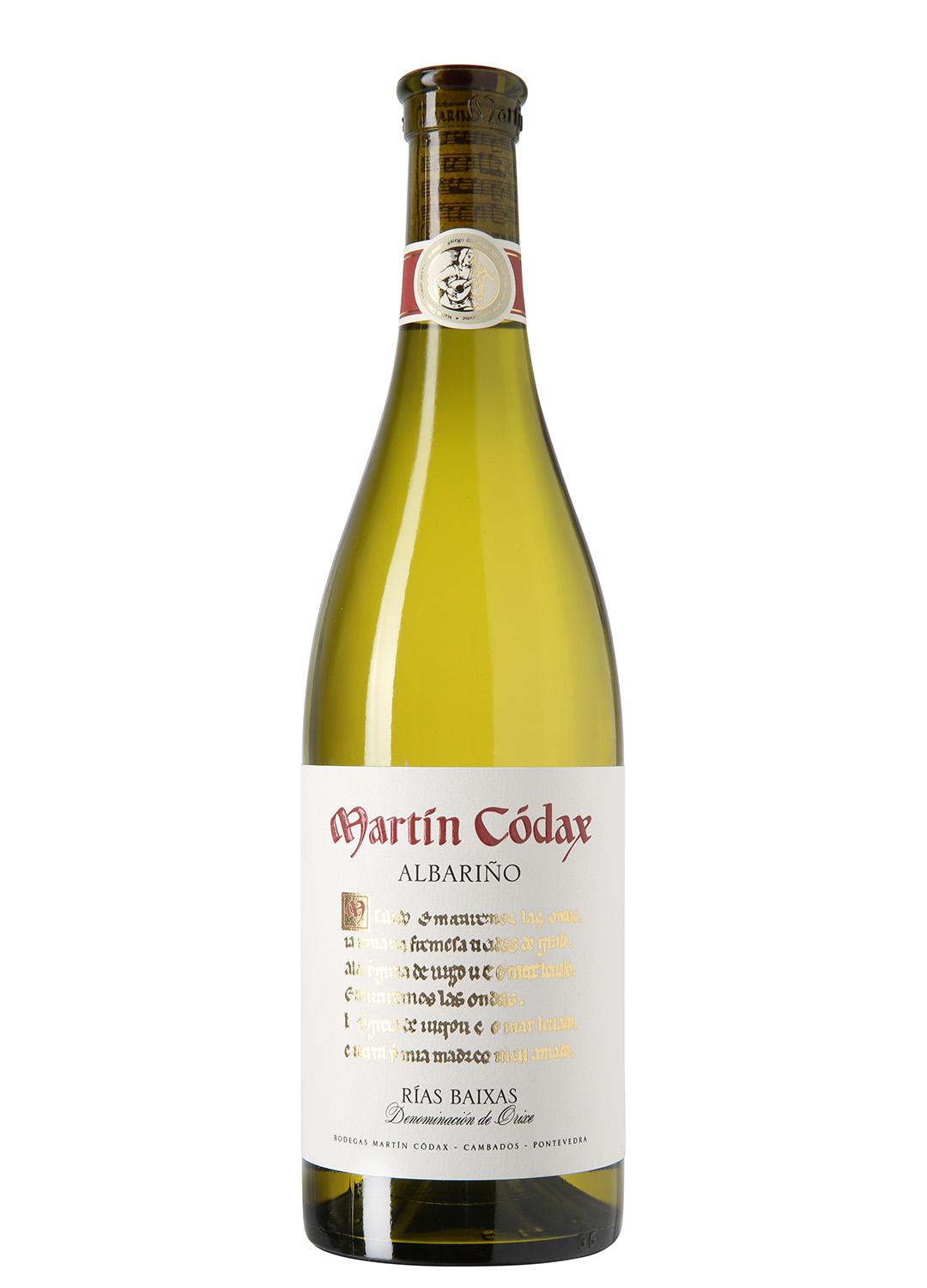
Spain’s current popularity as the culinary hub of innovative gastronomy has opened the door for the proliferation of Spanish wines. The Spanish culture itself is extremely popular now and is being heavily marketed to a ready and receptive audience. One of the biggest draws of the Rías Baixas Albariños is that they represent great quality at an affordable price and offer an exciting alternative to the consumer bored with traditional white wine choices.
Rías Baixas (ree-ahs-buy-shass) is the most important Denomination of Origin (DO) in the Galicia region of northwestern Spain. The DO was formally established in 1988 and owes much of its acclaim to the white Albariño (al-ba-ree-nyo) grape, which has been elevated by many in Spain and abroad to cult status.
The history of the DO dates back to 1980 when an official denomination was created specifically for the Albariño grape variety. When Spain entered the European Union (EU) in 1986, however, the denomination was changed to Rías Baixas because EU wine laws did not recognize a DO named for a single grape variety. Since 1988, the DO has complied with all Spanish and EU wine regulations. The Rías Baixas DO is regulated by the Consejo Regulador (local governing body) which ensures adherence to permitted grape varieties, viticultural practices, winemaking and ageing procedures.
A beautiful green area, Rίas Baixas has been likened to a vision of the Garden of Eden. This lush land is characterised by rίas – deep, wide inlets of water encroaching many miles inland from the Atlantic Ocean. The southern group of these rίas is known as Rίas Baixas (the lower estuaries).

Rίas Baixas vineyards are all located within the province of Pontevedra in Galicia. There are 8,650 acres under vine with more than 6,500 growers and almost 20,000 individual vineyard plots ranging from 330 feet to 985 feet in altitude. Almost 100% of the wine produced in the region bears the DO designation. The cool, damp climate is dominated by its proximity to the Atlantic Ocean; however, there are varying micro-climates within the five different designated sub-zones of the region.
By far the finest white grape variety, Albariño accounts for 90% of all plantings in the Rίas Baixas region of Spain. Rías Baixas — and more precisely its sub-zone Val do Salnés — is the birthplace of Albariño. One origin theory — romantic but untrue — is that Albariño is derived from Riesling, brought by German pilgrims on the path to Santiago de Compostela, a holy city in Galicia. Another theory is that the Cistercian monks from Burgundy, who established vineyards wherever they built their churches, introduced it in the 12th or 13th century.
Whatever the origin, there is no dispute in terms of the quality and unique flavour profile of Albariño wines. It has been compared to Riesling for its minerality and bracing acidity; to Viognier, because of its fleshiness and peach/apricot character; and to Pinot Gris for its floral bouquet. When grown in highly acidic, granitic earth, Albariño yields a more mineral-driven and structured wine. In sandy soil, however, the Albariño grape gives a softer, rounder wine.
A small, green, thick-skinned variety, the grape resists fungal disease in the particularly damp climate of Rίas Baixas. Albariño is a low yielding variety and expensive to cultivate. It is also one of the few Spanish white grape varieties produced as a varietal wine on its own and designated on labels. Most often fermented in stainless steel for early drinking, Albariño is a versatile grape. It responds well to malolactic or barrel fermentation and maturation to create wines of wonderful complexity and ageing ability.
While Rίas Baixas is the birthplace of Albariño, it is also extensively grown in the Vinho Verde region of Portugal and can be found to a lesser extent in both Australia and the United States of America.
So what food goes best with Albariño? First of all, there is no absolute right or wrong food for wine pairing, so enjoy the wine with whatever food you like. There is, however, one simple guideline: match the wine to the texture (or weight) of the food. These food-friendly wines with their intense fruit character, lively acidity, moderate alcohol and mineral overtones have a roundness and great level of acidity, which allows them to pair beautifully with a wide range of cuisines. While they are exceptional with fresh fish and seafood of all kinds, they are also delicious with chicken, pork and veal dishes as well as a variety of cheeses.

Albariño also refreshes and cools off the palate, making it an ideal accompaniment to many spicy cuisines from around the world, including Indian, Chinese, Thai, and Vietnamese food. Although I am not really an advocate of drinking wine with spicy foods.
Don’t let the fact that a large variety of wines are produced from the same Albariño grape fool you into thinking that they all taste alike. Each producer has its own unique style, based on its winemaking philosophy, experience, sub-zone location, soil and micro-climate. This is why tasting many different wines from the region is an interesting and fun experience.
Albariño is a crisp and refreshing wine, like biting into a ripe, juicy apple. It has beautiful acidity that wakes up your palate. This is an aromatic and concentrated fruity wine. On the nose, it is reminiscent of white peaches, apricot, citrus fruits and jasmine. On the palate, it is dry and lively, with an intense fruity character and mineral overtones.
 My favourite winery to date in this region is 'Bodegas Martín Códax' which is located in the Val do Salnés sub-zone. It was established in 1986 and is a cooperative of 285 members. It takes its name from a 13th-century local troubadour. 100% Albariño wines are marketed under the Martín Códax and Burgáns brands.
My favourite winery to date in this region is 'Bodegas Martín Códax' which is located in the Val do Salnés sub-zone. It was established in 1986 and is a cooperative of 285 members. It takes its name from a 13th-century local troubadour. 100% Albariño wines are marketed under the Martín Códax and Burgáns brands.
Their vineyards, situated in small plots, use the typical system of “emparrado” and are meticulously cared for, nurtured by their experts in order to get the best possible quality. Harvest usually starts in September and it is hand-harvested and the grape clusters are put in crates of 20 kg in order to avoid their being crushed or bruised and thereby decreasing quality.
Once they arrive at the winery, they are analysed to ensure they have the essential requirements and are introduced into the de-stemmer in order to separate the berries from the stems. Finally, a pneumatic press produces the juice.
Once they have the juice, the alcoholic fermentation process begins in stainless steel vats of 30.000 litres. When it is finished, malolactic fermentation starts. This fermentation converts malic acids into lactic acids, avoiding excessive acidity. Finally, the wine is stabilized and bottled.
Martín Códax, the man who inspired their albariño’s name, was one of the most important Galician men of the Middle Ages. The Vindel parchment, the oldest in Galician-Portuguese old language, is a testament to some of his songs which praise his love and passion for the sea.
Martin Codax is a pure albariño and it is produced following a rigorous and meticulous process in order to guarantee its varietal pureness and the traditional essence of the Salnés Valley original wines and I highly recommend it. Serve it very cold.
This wine is available in Carrefour and El Corte Ingles for around €10. It really pairs fantastically with seafood and rice dishes or on its own.